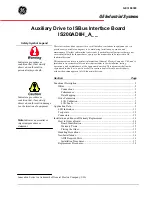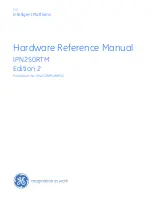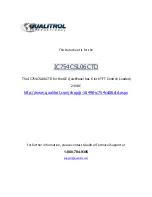
Orbit II Disc-to-Disc Copier Reference Manual – Revision J
5
Section 3 CD-R & CD-RW Media Recommendations:
By selecting a Microboards Technology Orbit II CD-to-CD Office Copier, you have purchased the finest
CD-R Copying hardware and operating system available. The second most important choice you will make
is selecting the media to use in your copying process. This section provides a brief overview of media and
presents our recommendations for media selection.
When CD Recordable technology was introduced there were only two dye formulations, cyanine and
pthalocyanine, and all CD-Rs had gold reflecting layers. Your basic media color choices were “green” or
“gold”. Most of the discs sold were “branded”, which means they carried the name of their manufacturer or
distributor. These early CD-Rs were expensive, and there were durability and interchange concerns.
Today there is a third dye formulation called AZO, reflecting layers may be either gold or silver (sometimes
called “platinum”), shades of blue have been added to the spectrum of colors, and “bulk” packaging has
joined branded product on dealers shelves. The term “bulk packaging” refers to CD-Rs that are sold on a
shrink-wrapped spindle rather than in individual packages. Bulk packaged CD-Rs do not usually carry their
manufacturer’s name. Unidentified bulk packaged CD-Rs are usually cheaper than branded products. The
most expensive media is individually packed in jewel cases and labeled with the manufacturers name.
Recently, CD-RW (re-writeable) media has joined the CD product family. Re-writeable discs use a different
recording technology than write once CD-Rs. Because of this they are more expensive, record at lower
speeds, and may not function properly in older CD-Audio or CD-ROM Drives. Many CD-RW discs are
written in a format called “packet writing” which the Orbit II does not support. You may use CD-RW discs
that are not packet written as masters for your Orbit II Copying System, but make sure you understand
their limitations before you duplicate blank CD-RW discs. (Special note, Orbit II will detect CD-RW media
and automatically select the proper writing speed.)
The growth of CD-R and CD-RW usage has lured new vendors into the marketplace. Some of these
newer manufacturers may not have the manufacturing experience, or quality control procedures, required
to assure consistent recording and playback performance. The CD-R media recommendations that follow
will help you select CD-Rs that will maintain a consistent copying process and minimize your production
costs.
If your new Orbit II is your first CD-to-CD Office Copier, obtain a quantity of branded discs from a
manufacturer you know or is recommended to you. At this point, do not worry about the cost of the CD-Rs.
You will be using them to establish a performance reference for your copying process. We suggest you
obtain at least 50 of these branded CD-Rs. If you have previous CD-R copying experience select 50 CD-Rs
from a manufacturer you have had good results with in the past. If you need assistance in selecting a
reliable media source, contact the Microboards Technology Support Department.
Use this group of CD-Rs as you follow the sections of this manual that cover setting up and using your new
Orbit II Copying System. The sequence we provide will show you how to qualify the mechanical
performance, recording performance, and playback performance of this sample group. After samples from
this initial group of CD-Rs have completed the qualification procedure, you should set the remaining discs
aside as a media reference. If you encounter copying problems you can use a CD-R from your reference
group to determine if you have a media or an equipment problem. A known good reference CD-R will be
your basic troubleshooting tool.
Our recommended media qualification procedure includes copying, comparing, and testing on target
systems. After you have established your reference media you may continue to use that manufacturer’s
product, or you may qualify other sources using the same procedure.






































